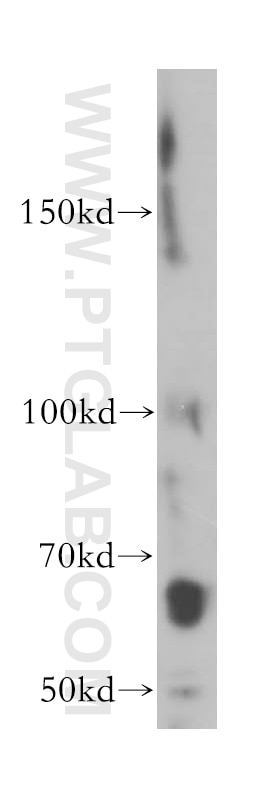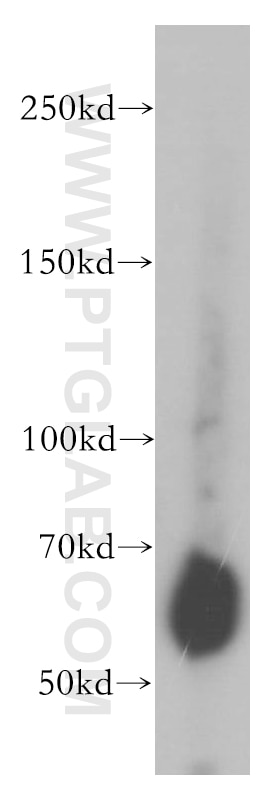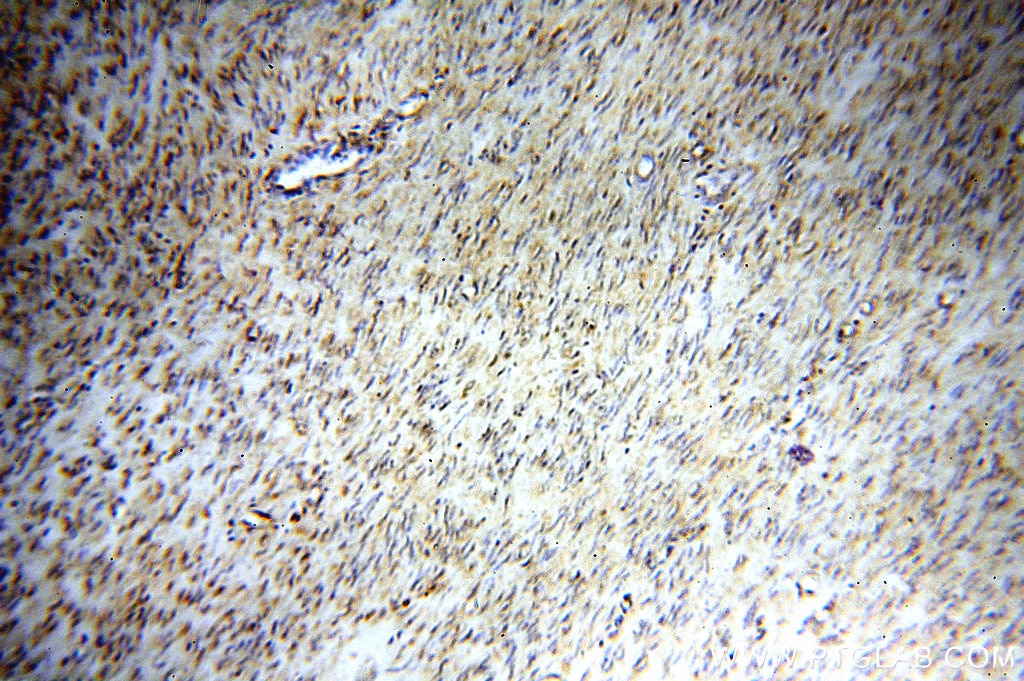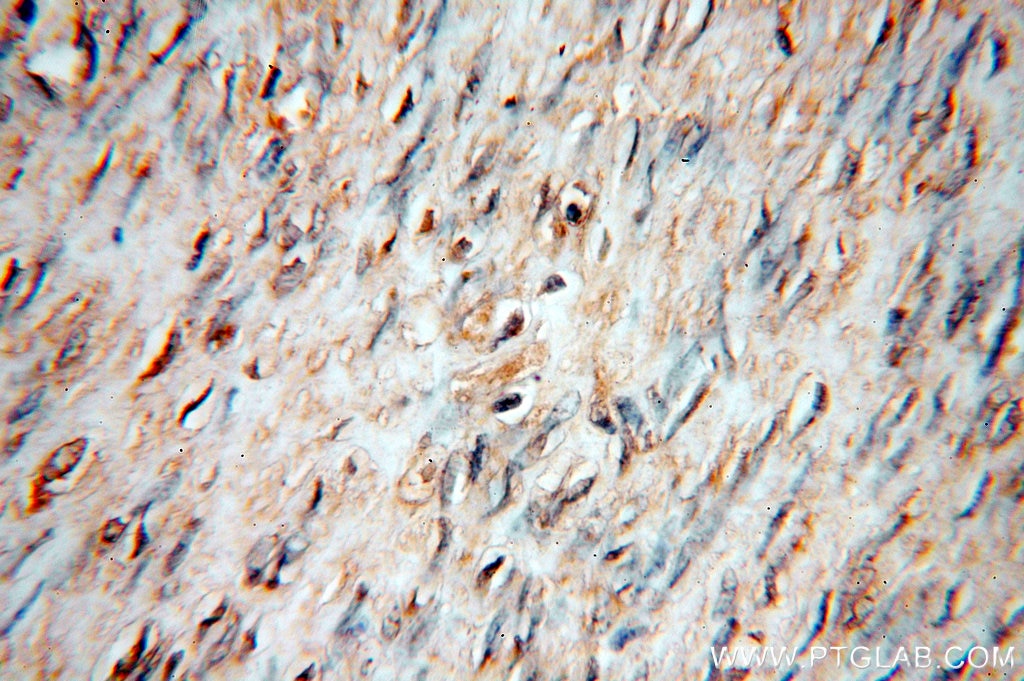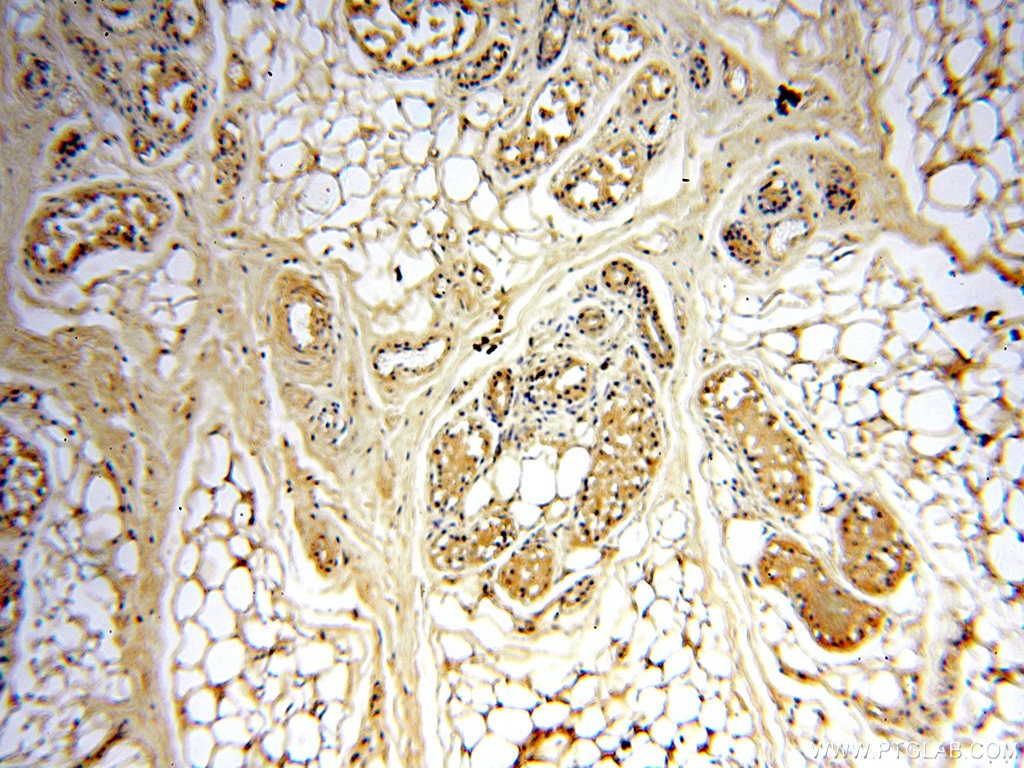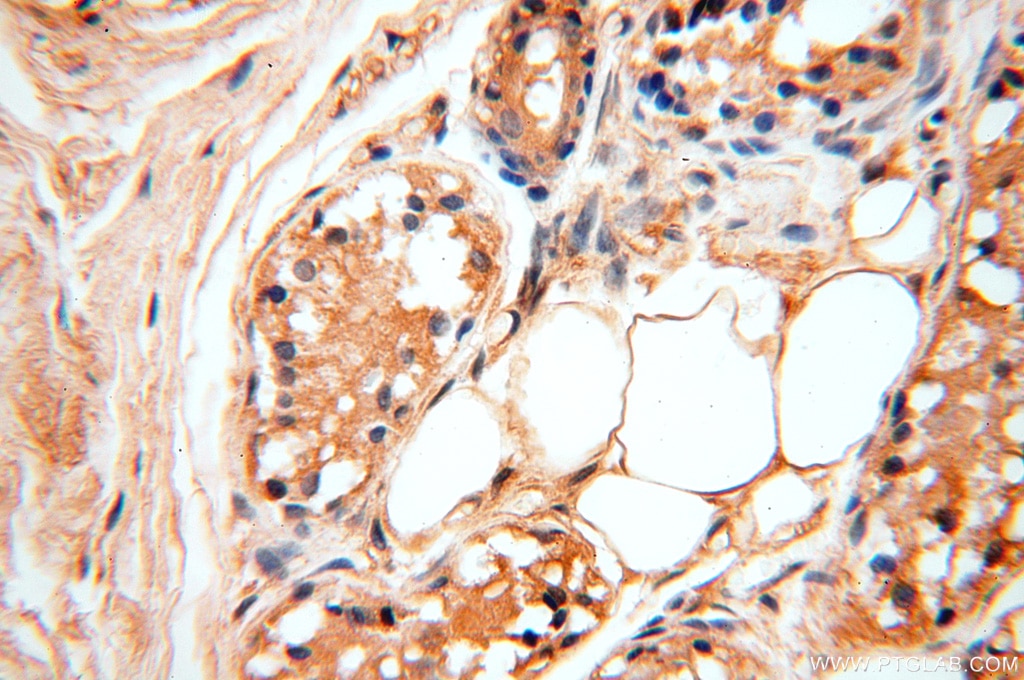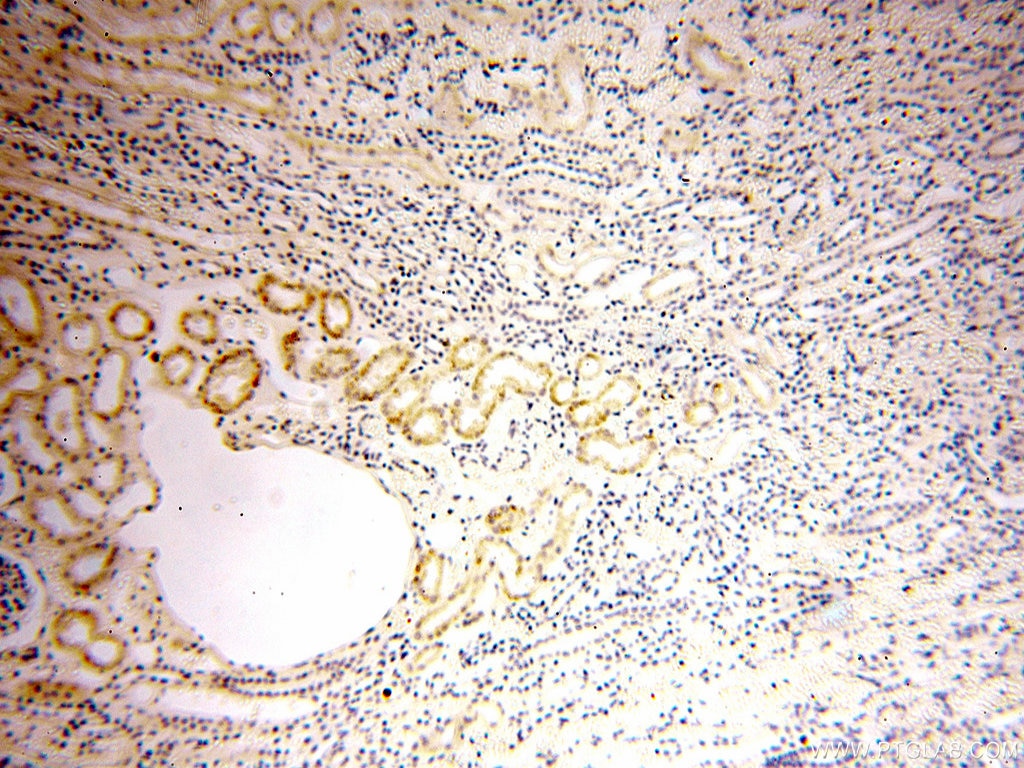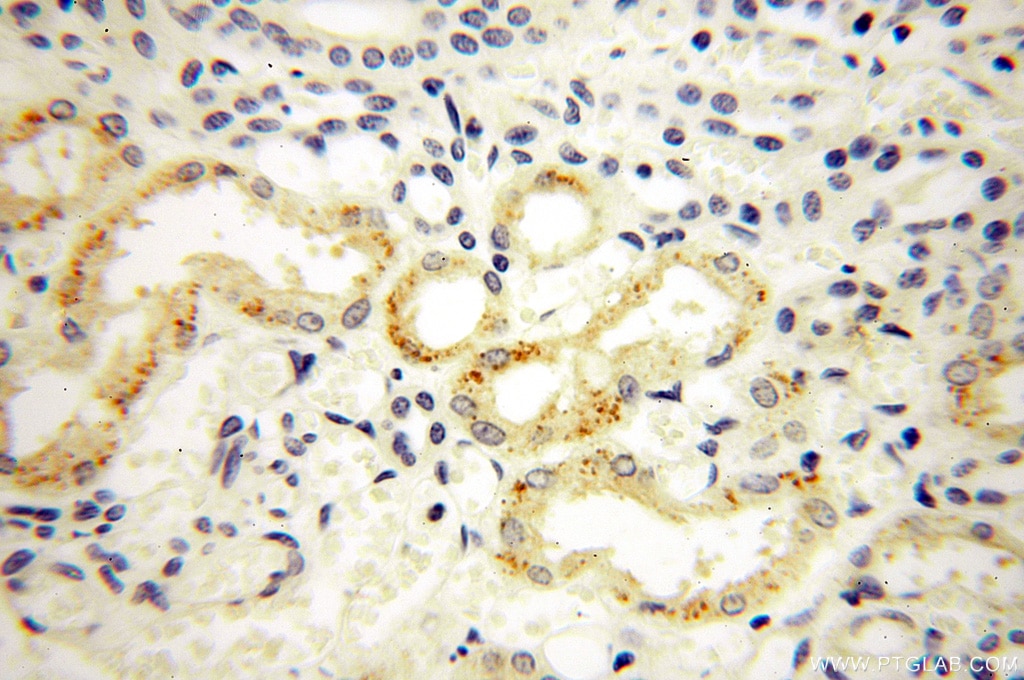- Phare
- Validé par KD/KO
Anticorps Polyclonal de lapin anti-STS
STS Polyclonal Antibody for WB, IF, IHC, ELISA
Hôte / Isotype
Lapin / IgG
Réactivité testée
Humain, rat, souris
Applications
WB, IHC, IF/ICC, ELISA
Conjugaison
Non conjugué
N° de cat : 17870-1-AP
Synonymes
Galerie de données de validation
Applications testées
| Résultats positifs en WB | cellules MCF7, tissu placentaire humain |
| Résultats positifs en IHC | tissu placentaire humain, tissu cutané humain, tissu d'hystéromyome humain, tissu ovarien humain, tissu pulmonaire humain, tissu rénal humain il est suggéré de démasquer l'antigène avec un tampon de TE buffer pH 9.0; (*) À défaut, 'le démasquage de l'antigène peut être 'effectué avec un tampon citrate pH 6,0. |
| Résultats positifs en IF/ICC | cellules HeLa |
Dilution recommandée
| Application | Dilution |
|---|---|
| Western Blot (WB) | WB : 1:500-1:2000 |
| Immunohistochimie (IHC) | IHC : 1:20-1:200 |
| Immunofluorescence (IF)/ICC | IF/ICC : 1:50-1:500 |
| It is recommended that this reagent should be titrated in each testing system to obtain optimal results. | |
| Sample-dependent, check data in validation data gallery | |
Applications publiées
| KD/KO | See 1 publications below |
| WB | See 4 publications below |
| IF | See 2 publications below |
Informations sur le produit
17870-1-AP cible STS dans les applications de WB, IHC, IF/ICC, ELISA et montre une réactivité avec des échantillons Humain, rat, souris
| Réactivité | Humain, rat, souris |
| Réactivité citée | rat, Humain, souris |
| Hôte / Isotype | Lapin / IgG |
| Clonalité | Polyclonal |
| Type | Anticorps |
| Immunogène | STS Protéine recombinante Ag12353 |
| Nom complet | steroid sulfatase (microsomal), isozyme S |
| Masse moléculaire calculée | 583 aa, 65 kDa |
| Poids moléculaire observé | 63-65 kDa |
| Numéro d’acquisition GenBank | BC075030 |
| Symbole du gène | STS |
| Identification du gène (NCBI) | 412 |
| Conjugaison | Non conjugué |
| Forme | Liquide |
| Méthode de purification | Purification par affinité contre l'antigène |
| Tampon de stockage | PBS avec azoture de sodium à 0,02 % et glycérol à 50 % pH 7,3 |
| Conditions de stockage | Stocker à -20°C. Stable pendant un an après l'expédition. L'aliquotage n'est pas nécessaire pour le stockage à -20oC Les 20ul contiennent 0,1% de BSA. |
Informations générales
STS(Steroid sulfatase) is also named as ASC(arylsulfatase C), ARSC1 and belongs to the sulfatase family. It is expressed in human liver and is responsible for the hydrolysis of many estrogen and hydroxysteroid sulfates, including dehydroepiandrosterone (DHEA)-sulfate and β-estradiol(E2)-3-sulfate(PMID:19589875). This enzyme has also been documented to occur in many other tissues, including skin, lung, ovary, and adrenal gland. The estimated molecular mass of expressed human STS is 63-85 kDa which may represent different levels of glycosylation in the different tissues, as STS is known to be a glycoprotein and the full length protein has a signal peptide with 21 amino acids(PMID:17604157).
Protocole
| Product Specific Protocols | |
|---|---|
| WB protocol for STS antibody 17870-1-AP | Download protocol |
| IHC protocol for STS antibody 17870-1-AP | Download protocol |
| IF protocol for STS antibody 17870-1-AP | Download protocol |
| Standard Protocols | |
|---|---|
| Click here to view our Standard Protocols |
Publications
| Species | Application | Title |
|---|---|---|
Clin Cancer Res Steroid Sulfatase Stimulates Intracrine Androgen Synthesis and is a Therapeutic Target for Advanced Prostate Cancer.
| ||
Sci Rep Estrogen Secreted by Mesenchymal Stem Cells Necessarily Determines Their Feasibility of Therapeutical Application. | ||
Mol Cell Biochem Resveratrol and its methoxy derivatives modulate the expression of estrogen metabolism enzymes in breast epithelial cells by AhR down-regulation. | ||
J Biomed Res Suppressed estrogen supply via extra-ovarian progesterone receptor membrane component 1 in menopause. | ||
Life Sci Alliance Macrophage Sult2b1 promotes pathological neovascularization in age-related macular degeneration |
